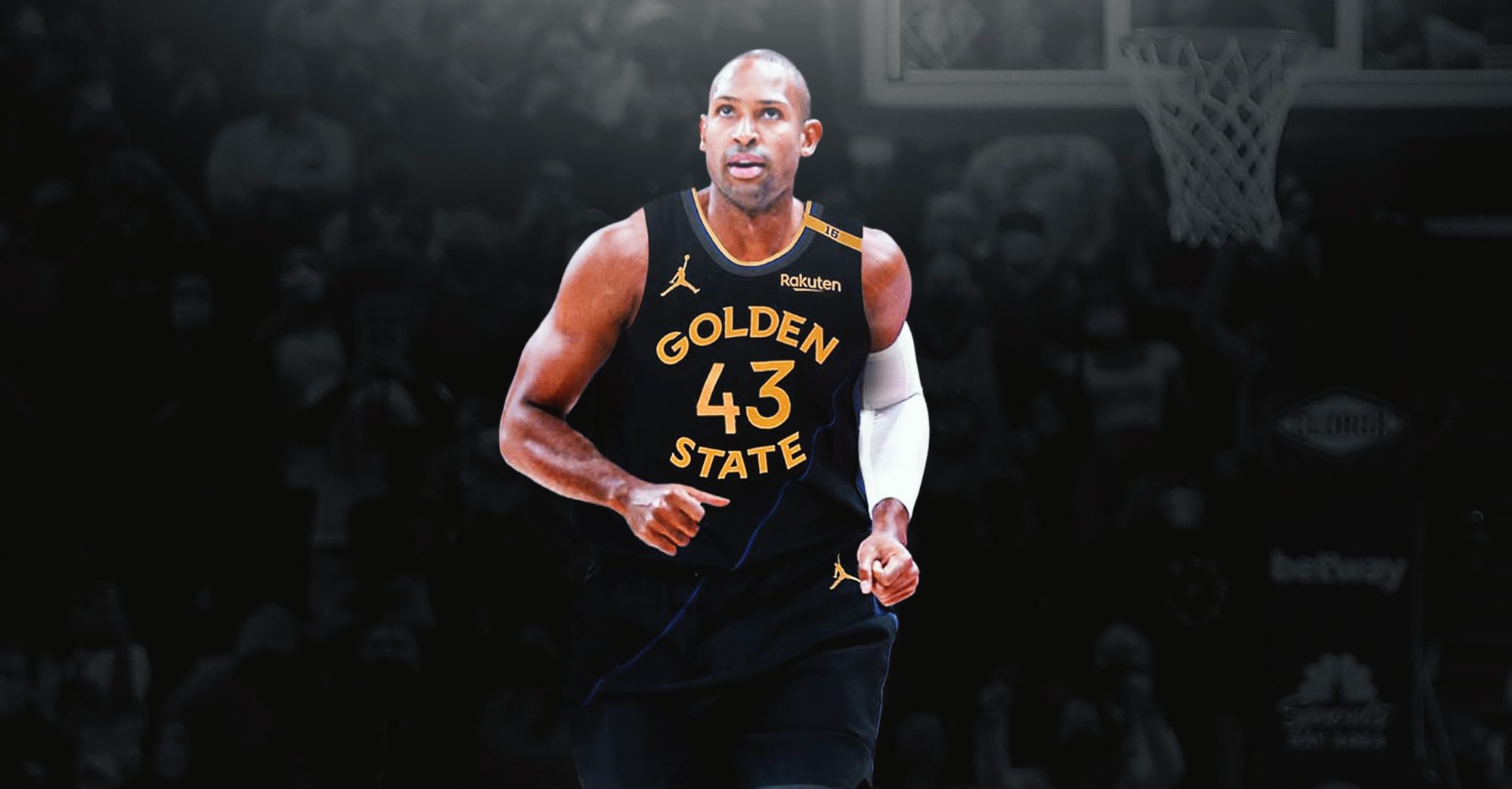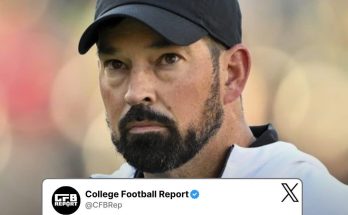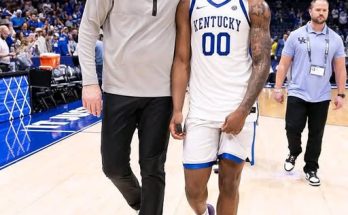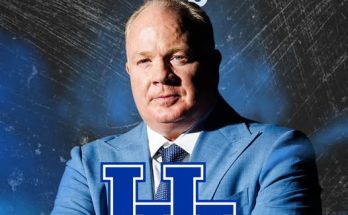Udonis Haslem, the longtime veteran and respected voice in NBA circles, recently made waves with his candid comments on Al Horford potentially joining the Golden State Warriors. His take was straightforward, and for some, even controversial: Horford, while a respected player with a high basketball IQ, would not be the answer to the Warriors’ current struggles. While many fans and analysts speculated that a seasoned big man like Horford could bring experience, composure, and a needed presence in the frontcourt, Haslem’s perspective opens up a broader conversation about what’s really going on in Golden State—and why plugging one piece into the machine doesn’t necessarily fix it.
To understand the full context of Haslem’s opinion, it’s necessary to first analyze the current state of the Warriors, a team that not too long ago dominated the NBA with an awe-inspiring dynasty. Their chemistry, ball movement, and high-tempo style revolutionized modern basketball. But in recent years, the Warriors have stumbled into inconsistency. Injuries, aging stars, and front-office decisions have all played a role in that decline. While Stephen Curry remains a transcendent talent and a beacon of stability, his supporting cast hasn’t been as consistent or effective as in years past.
Draymond Green, while still a defensive anchor and emotional leader, has shown signs of aging and volatility. Klay Thompson, once an elite two-way player, has returned from back-to-back catastrophic injuries, and though he’s shown flashes of brilliance, he’s no longer the automatic All-Star he once was. Add to that a series of moves involving young talent—like James Wiseman and Jonathan Kuminga—that haven’t fully panned out or developed at the pace the franchise hoped. The Warriors have tried to walk a tightrope between contending now and developing for the future, and it’s left them in an awkward middle ground.
That’s where Al Horford enters the conversation. A player known for his leadership, versatility, and ability to anchor a defense, Horford would seemingly provide the kind of frontcourt stability the Warriors have lacked. His shooting touch allows him to stretch the floor, and his experience in playoff environments makes him an asset in pressure situations. But as Haslem pointed out, bringing in Horford might treat the symptoms, not the root cause, of what ails the Warriors.
Haslem’s comments reflect a deeper understanding of team dynamics and the psychological fabric of championship-caliber rosters. The Warriors’ issues go beyond needing a big man who can shoot or defend pick-and-rolls. Their problems lie in the erosion of their identity. When the Warriors were at their peak, everyone knew their role and performed it at an elite level. The trust was implicit, the offense flowed like water, and the defense swarmed like a pack of wolves. Today’s Warriors have lost some of that cohesion.
Horford’s age is also a factor that cannot be ignored. At 38, Horford is nearing the twilight of his career. While he’s still productive in a defined role with the Boston Celtics, asking him to join a team like Golden State and transform its trajectory might be unrealistic. The NBA is faster, younger, and more physically demanding than ever. Relying on a veteran—even one as smart and fundamentally sound as Horford—may be asking too much when the deeper issues are systemic.
Another point Haslem seemed to allude to is culture. The culture that made the Warriors special has taken hits in recent years. Internal tension, most famously between Draymond Green and Jordan Poole, pointed to cracks in what was once the league’s most unified locker room. Steve Kerr’s voice, once gospel, may no longer resonate the same way it did with a younger roster. Leadership gaps are becoming more noticeable. And while veterans like Curry continue to lead by example, leadership by example only works when the supporting cast can follow.
The Warriors also have financial constraints. Their payroll is bloated, and luxury tax implications loom large. Integrating Horford into that picture without making other sacrifices would be difficult. And what would Horford’s role be? Would he come off the bench behind Kevon Looney? Would he be asked to play significant minutes and match up with the likes of Nikola Jokic, Anthony Davis, or Rudy Gobert in the West? The idea sounds good on paper, but the implementation raises serious questions.
From a strategic standpoint, the Warriors’ reliance on small ball—once their greatest strength—is becoming their Achilles heel. Teams have figured out how to counteract their spacing. Size and athleticism are being prioritized across the league. Denver, Minnesota, and even Oklahoma City are showing what happens when you combine size with skill. The Warriors, on the other hand, have stuck to a formula that may no longer be the future of the league. Horford doesn’t fundamentally change that. He’s not a rim protector in the mold of Gobert. He’s not a lob threat like Jarrett Allen. And he’s certainly not a game-changer at this stage of his career.
What Haslem brings to the table in this conversation is perspective. He spent his entire NBA career with the Miami Heat, a franchise known for its no-nonsense, culture-first approach. Haslem understands what it takes to win—not just on the court, but in the locker room, in film sessions, and during the dog days of the season. When he says Horford won’t fix the Warriors, it’s less about disrespect to Horford and more about the recognition that Golden State’s problems are multi-layered.
It’s also worth noting that Horford’s best success in recent years has come as a complementary piece, not as a cornerstone. On the Celtics, he benefits from playing alongside elite wing defenders like Jayson Tatum and Jaylen Brown. He’s not asked to carry the load. In Golden State, the expectations would be different. The fans, the media, and perhaps even the team itself would see him as a missing piece—a potential savior. That’s an unfair burden.
Haslem’s assessment challenges the NBA community to think critically about how teams are built and how problems are solved. The era of superstar trades and high-profile acquisitions has taught fans to believe that one player can shift a franchise’s fortunes. But that narrative ignores the importance of chemistry, development, and organizational alignment. Haslem is essentially reminding us that building a winning team isn’t about adding names—it’s about constructing a system where the pieces fit and amplify each other.
Golden State’s front office, led by Mike Dunleavy Jr., has difficult decisions ahead. The Warriors have to decide whether they’re going all-in for one last run with Curry, or whether they’re pivoting to a rebuild centered around younger players like Kuminga and Moses Moody. Straddling both paths has proved ineffective. The addition of Chris Paul last year was a gamble that didn’t pay off as hoped. While CP3 brought experience, his presence disrupted rhythm, and the team never found a steady groove. If Horford were to join, would it be more of the same?
Ultimately, Haslem’s commentary speaks to a larger issue: the need for honest assessments in team-building. Too often, organizations chase short-term solutions without addressing long-term sustainability. Haslem has seen both sides of that equation. He’s played with superstars, mentored young players, and stayed ready when his number was called. His insights aren’t media fluff; they’re grounded in hard-earned experience.
The Warriors don’t need another veteran for the sake of it. They need clarity. They need a recalibration of their identity. That might mean trading away beloved players or making unpopular decisions. It might mean stepping back to move forward. And while Horford is a classy professional and a proven leader, he can’t be expected to be the glue for a team that’s slowly unraveling.
The NBA is evolving quickly, and teams that fail to adapt get left behind. Golden State changed the game once, but the game has now changed again. Teams are bigger, deeper, and more physically imposing. The small-ball revolution that once caught teams off guard is now just one tool in the toolkit. The Warriors must evolve or risk becoming a cautionary tale of what happens when dynasties cling too tightly to the past.
In this way, Haslem’s critique should be viewed not as a slight against Horford, but as a challenge to the Warriors’ leadership to look deeper, think broader, and plan smarter. Fixing a broken team isn’t just about adding talent—it’s about reshaping philosophy. Horford is the kind of player who thrives in the right situation, but the Warriors need more than a situational advantage. They need direction.
What’s clear is that Golden State’s problems won’t be solved by simply adding another aging vet, no matter how polished. The answer lies in redefining who they want to be. Do they want to squeeze one last drop out of a legendary core? Or do they want to prepare for a new era? Either way, decisions need to be made with conviction. Hesitation and half-measures will only prolong the decline.
Haslem’s voice, one of reason and experience, should serve as a wake-up call not just for the Warriors, but for any team hoping to sustain success in an increasingly competitive league. The formula that brought Golden State to glory will not bring them back. New challenges require new strategies. And while Al Horford may bring wisdom and leadership, he is not the solution to a puzzle that requires a complete redesign.
This moment in the Warriors’ history is pivotal. The next few moves could determine whether they reload or regress, whether they remain relevant or drift into mediocrity. Udonis Haslem’s viewpoint invites us to think deeply about those stakes. His message is clear: It’s not about adding names. It’s about building a new foundation. And that’s something no one player—however respected—can do alone.



